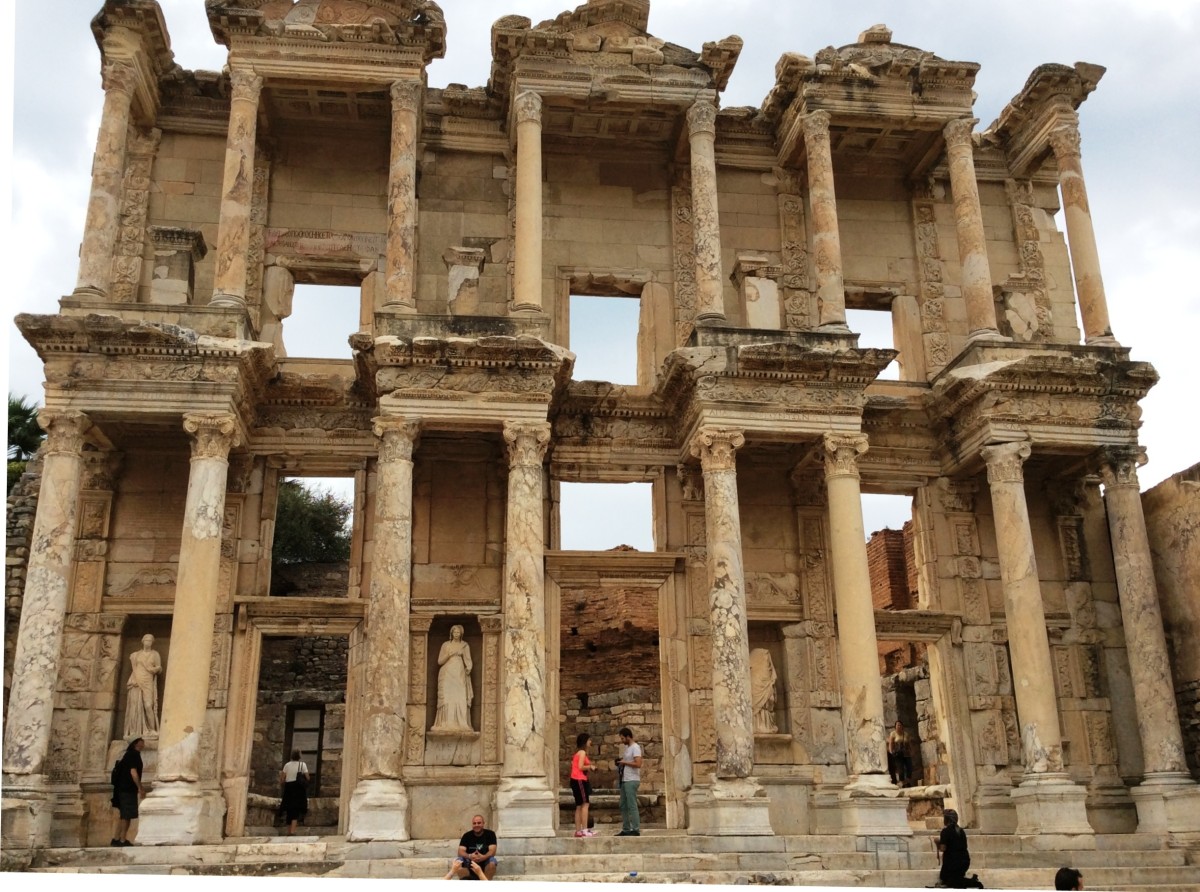
EPHESUS EXCAVATIONS TO RESUME IN 2018
Austrian archaeologists are allowed to resume their excavation activities in the ancient city of Ephesus. Turkey had stopped the excavations under the direction of Austrian archaeologist Sabine Ladstätter in September 2016.
The release came on Thursday from Turkish Foreign Minister Mevlüt Cavusoglu at a joint press conference with Foreign Minister Karin Kneissl (FPÖ) in Vienna. "Through the events and steps in Austria we have stopped the archaeological companies in Ephesus. We would like to resume them, "said Cavusoglu after a meeting with Kneissl in the historic Dolmabahce Palace in Istanbul. He said that the excavations had "a certain symbolic power for Austria."
The Austrian archaeologists had to stop their work in September 2016. It was a reaction to Austria's ultimate demand to break off EU accession negotiations with Turkey. The end of the excavations was a heavy blow to the archaeologists – around 250 scientists from up to 20 countries participated in the project every year.
Sabine Ladstätter, director of the Austrian Archaeological Institute (ÖAW) , was overwhelmed just a few minutes after receiving the news in Abu Dhabi of the permission to resume excavation in Ephesus. "That's incredible, the relief is great," she said. Ladstätter has been involved in excavations in Ephesus for more than 20 years. She has been leading the excavations for several years.
The request for permission to excavate was submitted to the Turkish authorities before Christmas. Foreign Minister Karin Kneissl (FPÖ) assured her that she would personally take matters into her own hands. Usually, the excavation season in Ephesus would begin in March, but due to the new situation, they will probably travel to Turkey next week.
Foreign Minister Kneissl was pleased with the Turkish side and emphasized that their expectations of the visit was exceeded. Ephesus is a symbolic question. "This is a scholarly work with an economic, tourist dimension that has been connecting us since 1895," said Kneissl.
More than 120 years of Austrian excavations
Ephesus was one of the most important cities of antiquity associated with the sanctuary of the Artemis owned one of the Seven Wonders of the World. Austrian archaeologists dug in Ephesus since 1895. The city flourished for the first time among the Greeks, the Romans made it a metropolis and for the Christians it was the destination of the first pilgrimages. That the place near the present-day Selcuk (Turkey) was resurrected from the ashes in the 20th century and now attracts around two million tourists a year, owes much to the work of the Austrian archaeologists.
Archeologists under the direction of Otto Benndorf have been able to find sensational finds in the very first years of excavation. In 1903, the Parthian frieze, the most important relief of Roman times in Asia Minor, was found, which had been erected to celebrate the Roman victory over the Parthians (161-165 AD). Even today, this frieze is the showpiece of the Ephesus Museum in Vienna. In the following years further significant buildings were uncovered. The first in this series were the early Christian Mary and the St. John's Church.
First settlement traces 5,000 years ago
Traces of earlier settlements in the Ephesus area date back to the third millennium BC. Back. Since the 10th century BC Settled by Greeks in the 3rd century BC, Ephesus became the center of Ionian Greece and a rich commercial city. In its heyday in the first and second centuries AD (80 to 262), Ephesus was the capital of the Roman province of Asia and a magnificent metropolis.
The decline of the city began at the end of the third century. Violent earthquakes and the invasion of the Goths caused great damage. In addition, the port began to sand increasingly. Under Byzantine rule (5th to 7th century) Ephesus was still a relatively important city. As the mission place of the apostle Paul and, as the legend says, the place of death of Mary, Ephesus was one of the early sites of Christianity. Finally, the city sank into insignificance in the Ottoman Empire. It was not until the 19th century that the more than thousand-year-old slumber was interrupted.
"Resurrection" by tourism
The "resurrection" of Ephesus as a ruined city and attraction for tourists began in the 1950s with the exposure of the Kuretenstraße. Under the supervision of the excavators Franz Miltner and Fritz Eichler under the patronage of the Austrian Academy of Sciences the first reconstruction took place: the Hadriantempel. The famous "Artemis" statues also saw the light of day for the second time.
The Roman luxury residential buildings that became known as "Hanghäuser - Terrace Houses" were dug up in the 1960s. Protected by a new, modern roof construction, they were made accessible to visitors in 2006. The UN cultural organization UNESCO included the archaeological site in the World Heritage List in 2015.
News from: https://tech2.org/austria/archaeologists-are-allowed-back-to-ephesus/ (25 January 2018)